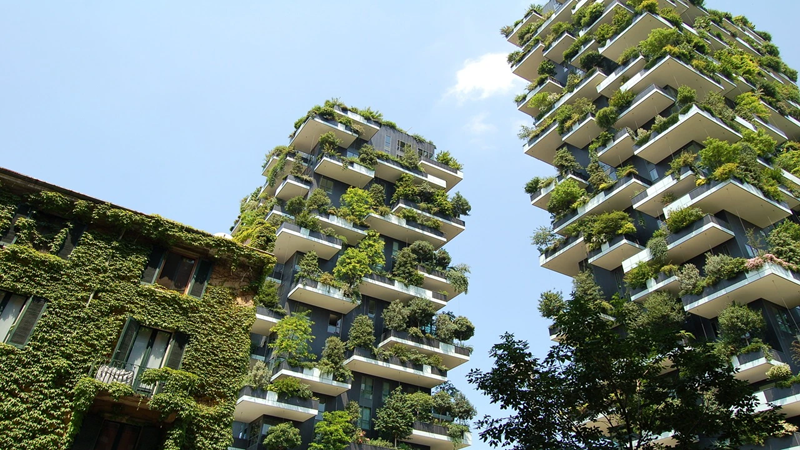
Tabatha Ferrari
Green Infrastructure and Sustainable Development: Italian Initiatives Towards Climate Resilience
Most Read Stories Today
-
Water Scarcity and Artificial Rainfall: The Positive and The Negative Effects of Cloud Seeding, including Health Hazards and Climate Implications.
-
Renewable Energy in Rural Areas: Challenges, Opportunities, and Successful Rural Projects
-
Pakistan's Agriculture at Risk Due to Climate Variability
-
South Africa's Recent Floods: Is Climate Change to Blame?
-
South Korea's floods: root causes and prevention strategies.
-
South Africa: Cape Town, A City Under Fire
-
The Human Cost of Climate Disasters
-
Our Oceans, Our Future: The South African Dilemma of Overfishing
-
Degenerative Impact of Hydrocarbons On The Environment.
-
Sustainable Urban Planning - Copenhagen and the Path to Climate Resilience
Green infrastructure, according to the “EU Strategy” consists of “a strategically planned network of natural and semi-natural areas with other environmental elements, designed and managed in a way that provides a broad spectrum of ecosystem services. On land, green infrastructure can be found in a rural and urban context.”
It is therefore evident that green infrastructure can play a significant role in mitigating climate change by reducing greenhouse gas emissions, improving air and water quality, and providing numerous co-benefits to both the environment and communities.
For instance, Italy has made significant investments in renewable energy, particularly solar and wind power, in order to reduce its reliance on fossil fuels, lower greenhouse gas emissions, and advance towards its climate targets.
As a matter of fact, Italy is experiencing a particularly dramatic situation, as winter temperatures correspond to +8 or +10 degrees above the average of the period and where the level of pollution, especially in the area of the Po Valley characterised by the presence of large cities and industries, is getting higher and higher, exceeding the maximum values prescribed by law. The problem is even more exacerbated by the fact that, so far, only a few Italian local governments have alerted citizens about the health risks of staying too long outdoors. But here are a few success cases in Italy that could pave the way for further strategic initiatives aimed at supporting sustainable development scenarios:
- Bosco Verticale (Vertical Forest) in Milan: Bosco Verticale, designed by architect Stefano Boeri, is a pair of residential towers in Milan covered with more than 900 trees, 5,000 shrubs, and 11,000 floral plants. Bosco Verticale is a metropolitan forestation project aimed at regenerating urban biodiversity as it relates to the policies of reforestation in large urban and metropolitan areas. It is a system aimed at optimizing and producing energy by building a microclimate that can filter out the fine dust in the city. This is made possible by the moisture produced by plants that can absorb carbon dioxide, produce oxygen, and reduce noise pollution. The irrigation of the plants is achieved thanks to a water filtration system, while electricity is produced through 500 square meters of solar panels and systems that exploit geothermal energy. Each maintenance “cell” is used for data collection, ensuring the constant assessment of the ecological system's operation.
- Rome's Sustainable Mobility Initiatives: Rome has implemented various sustainable mobility initiatives, including expanding bike lanes, promoting electric vehicles, and improving public transportation infrastructure. These efforts aim to reduce emissions from transportation, alleviate traffic congestion, and enhance air quality in the city. New electric buses and bike lanes are gradually offsetting the lack of a large metro infrastructure and helping Rome meet EU environmental targets. A further step forward would be the adoption of hydrogen- and supercapacitor-powered buses, in addition to traditional electric models. Indeed, battery-powered buses are useful for suburban areas as they would carry fewer passengers and make fewer trips, so overnight charging will be sufficient. Conversely, hydrogen- and supercapacitor-powered buses are much more appropriate for congested urban routes. To date, Rome is also currently participating in the USER-CHI project in order to test further innovative vehicle charging solutions.
As reported in the “State of the Green Economy Report,” the implementation of all these initiatives certainly involves higher-than-usual costs amounting to 136.7 billion euros, but that would be compensated by an increase in added value of more than 689 billion euros, including cost savings in the energy sector.
Green infrastructure represents an opportunity to increase urban resilience and quality of life for citizens by responding to global urgencies and ensuring the achievement of goals such as cohesion and regional development.
The transition to a greener economy is both an ecological and economic imperative.
Bibliography
- https://www.ansa.it/sito/videogallery/italia/2024/02/19/inquinamento-nella-pianura-padana-lanimazione-dellagenzia-spaziale-europea-esa_f0efee4d-5e44-4f29-951f-b8e4e508ca01.html
- https://www.teknoring.com/news/tutela-del-territorio/verde-urbano-a-che-punto-siamo-asvis/
- https://www.cmcc.it/it/analisi-del-rischio-i-cambiamenti-climatici-in-italia
- https://www.quotidiano.net/meteo/previsioni-tempo-italia-prossimi-giorni-aibyggxp
- https://eurocities.eu/stories/romes-green-mobility-makeover/

Terms & Conditions
Subscribe
Report
My comments